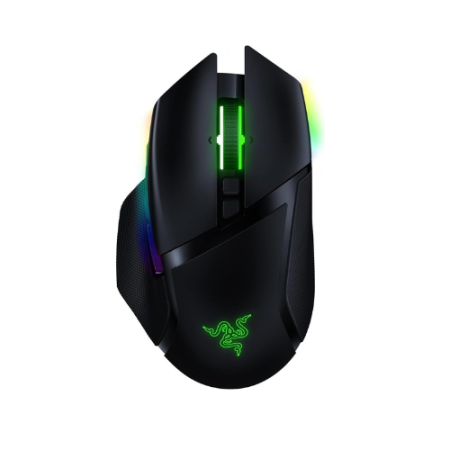As you may know, heavy workloads can increase a CPUs temperature. And if the CPU gets above a certain temperature, it can become damaged permanently.
So, you should always monitor your computer to ensure it’s functioning properly and prevent the PC from getting damaged irreparably. The question then is, how hot is too hot before a CPU gets damaged?
In this article, we will discuss how hot can a CPU get before damage, safe CPU operating temperature, signs of heat damage, and how your computer protects itself from heat damage. So let’s dive in.
What Are Worrying CPU Temperatures?
CPUs become hot due to the complexity of their electronic compounds which draws lots of power in a small area. It can affect the computer’s performance if it’s running demanding programs simultaneously.
Generally, if your CPUs temperature is above 80° Celsius or 176° Fahrenheit, your computer risks getting damaged. The damage might be permanent if the computer’s temperature goes above 90° Celsius or 194° Fahrenheit. Especially if your CPU reaches these temperatures regularly.
The good news is most PCs do not operate at an overly high temperature without taking a protective stance by shutting down. During the heat process, your computer will start thermal throttling to reduce the temperature.
But higher clock speeds and intense workload require more power, in turn producing more heat, rendering the thermal work ineffective. However, the temperature overdrive depends somewhat on the CPU and how long the temperature is elevated.
What Is Thermal Shutdown?
Thermal shutdown occurs when your computer is reaching a dangerous temperature that can potentially damage it. The basic input/output system controls the thermal shutdown by reading one or more sensors that measure PC temperature.
You will get notified through a pop-up window or screen of your system’s temperature and the imminent shutdown, depending on your laptop. Further, if your PC shuts down from thermal shutdown, give it about 15 minutes to cool down before powering it on. If the problem persists, something is wrong with your PC’s cooling system.

How to Know if Your System Is Overheating
- The smell of burnt electronic components
- General slowness of the PC
- The PC keeps rebooting automatically after a short period
- If the CPU fan becomes excessively noisy
- Discoloration on the motherboard around the CPU
- BIOS beeps on the system booting
- Evidence indicating CPU throttling
How to Control Your PC Temperature
You can take the following manual steps to fix the temperature of your computer
Clean the PC’s Fan
When dust builds up on your computer, it can affect its overall performance, reducing the airflow and causing the CPU temperature to rise. To fix this, shut down and open your system up, then use a can of compressed air to blow out the dust. Ensure to do this in a well-ventilated area and take a break if the can becomes cold.
Reapply a Thermal Paste
If you’ve had your PC for years, then reapplying a thermal paste on the CPU is an option you can employ to quell the overheating. It gradually loses its functionality over time if it becomes dirty and dry.
Thermal paste conducts heat off the CPU and is placed between the heating surface and the heat sink. Wipe the original thermal paste by using a microfiber cloth dabbed with 90+ percent isopropyl alcohol. Ensure to have turned off the system and unplugged it from a power source.
Speed Up Your Fan or Replace Your CPU Cooler
You can try speeding up your system fan to stop the overheating. The faster the fan spins, the more it moves air in and out of the case, improving the cooling system. You could also try replacing your CPU cooler. If you’ve had the system for years and the CPU cooler came with it, it’s probably worn out and needs changing.
Poor Cable Layout
If your system’s cable is not laid out properly, it will impede air from entering your PC, trapping hot air inside. So you have to eliminate any unnecessary cable by opening your computer’s side and laying out the cables properly. Tie or wrap the cables to increase the air space around your CPU.
Try and Lower the Room’s Temperature
If your room’s temperature is high, you can try lowering the temperature to fix the overheating.
How to Monitor CPU Temperature
You can monitor your CPU temperature using the BIOS menu. It requires you to restart your system to navigate the BIOS menu. The downside is that you cannot monitor the temperature continuously.
You will need to restart your system and use the BIOS menu if you stick with this option. On a lighter note, there are several third-party apps you can download and use in monitoring the CPU temperature. Unlike the BIOS menu, you do not have to restart your system to access the apps.

How to Use the Bios Menu to Check CPU Temperature
- Search for the “Windows Taskbar”.
- Click the “Settings” gear to open a new index and search bar.
- Choose the “Update & Recovery” tab.
- Click the “Recovery” tab in the left sidebar panel.
- Select “Advanced Startup” and click the “Restart Now” button.
Your PC will start restarting but will show several advanced startup options instead of the usual booting procedure.
- Click the “Troubleshooting Tab” and select the “Advanced Option” button.
- Click “Restart” to load your BIOS interface.
How Hot Can a CPU Get Before Damage? – Conclusion
You risk damaging your CPU when it emits excess heat. Though the PC has a thermal shutdown that helps it regulate excessive heat, it can only do so much and would likely fail with time. The good thing is your PC will notify you of the ongoing heat waves, depending on the system.
If you do not get the signal but experience automatic restarts, it’s a sign that your CPU is hot. So, give it time to calm down or seek ways to fix the problem. Finally, Quora the popular online forum, also has some great sources of information on the topic, you can access here.














